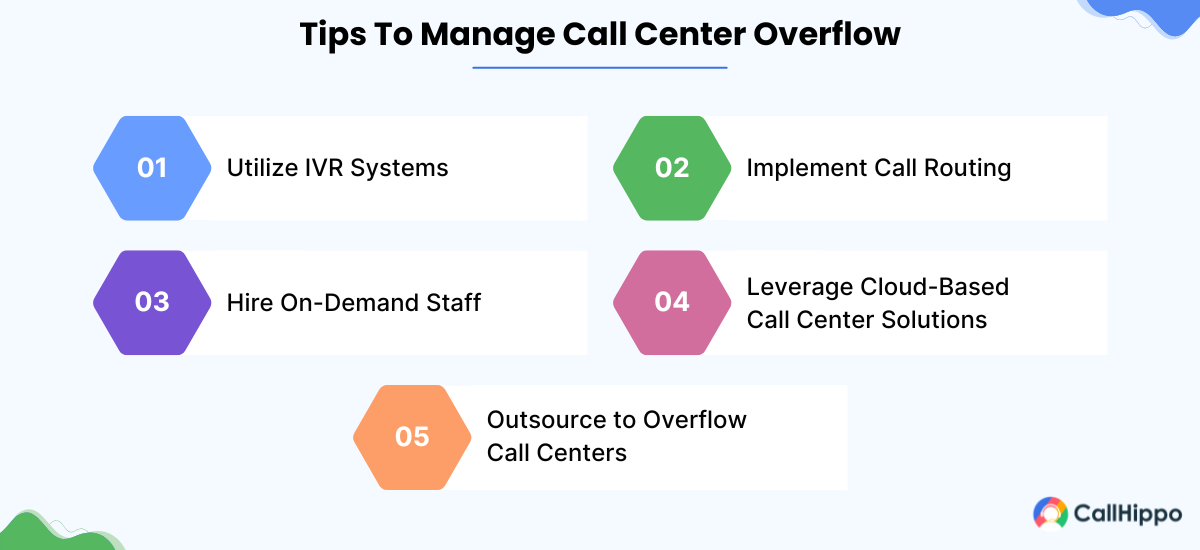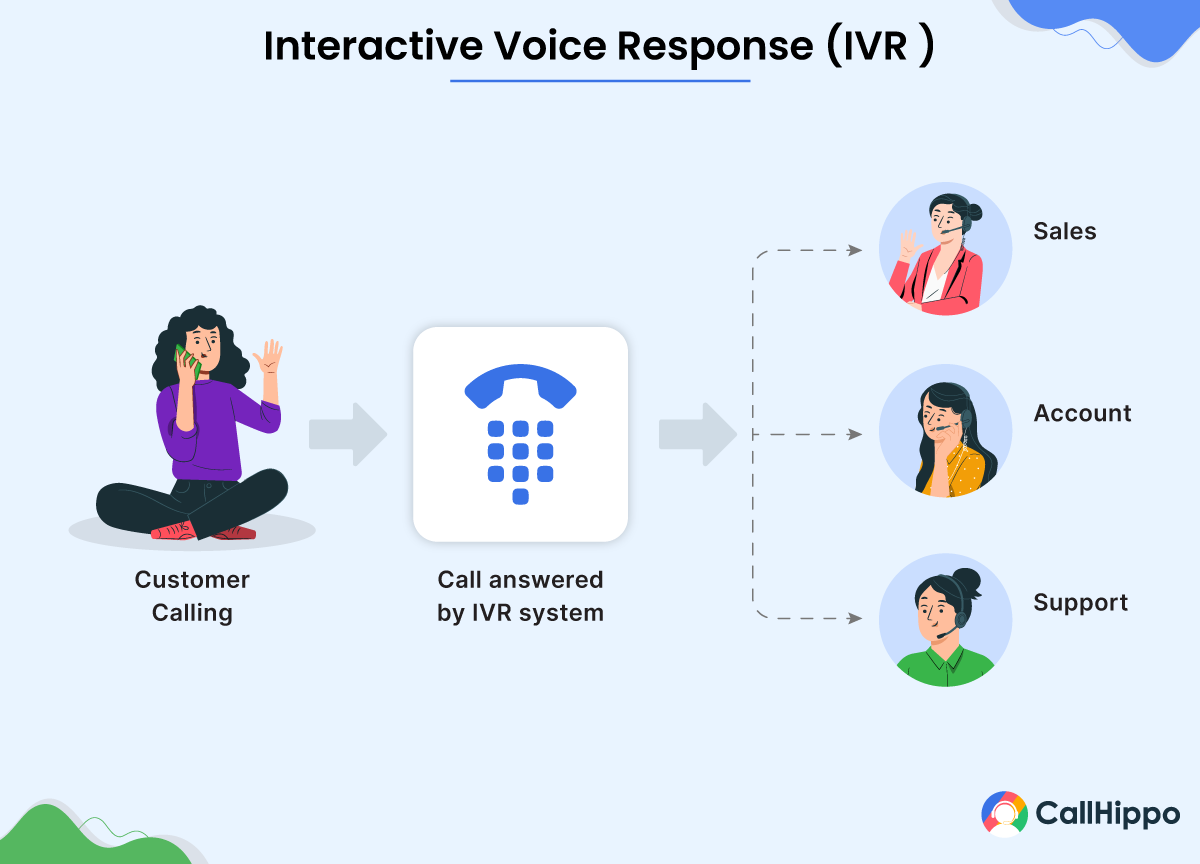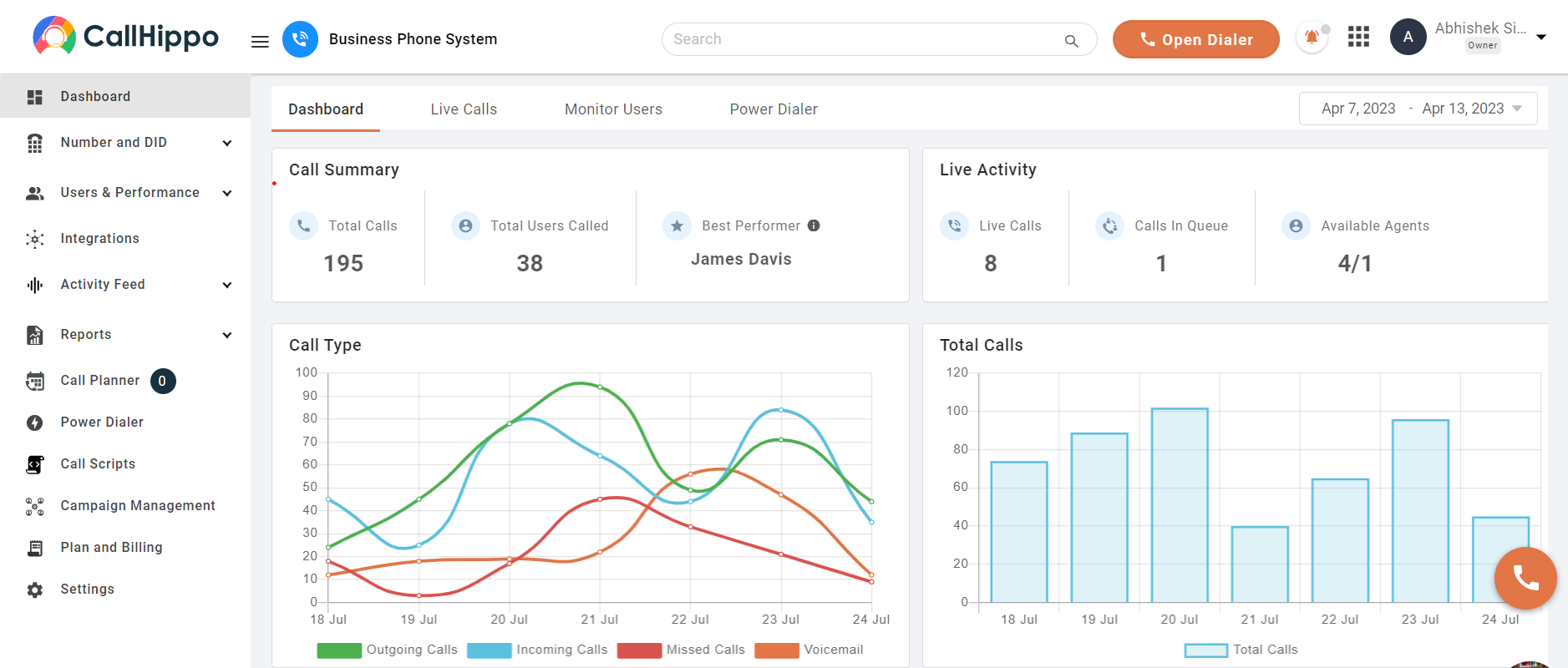Managing call center overflow is crucial for maintaining customer satisfaction and operational efficiency, especially since the majority of call centers aim to answer 80% of incoming calls within 20 seconds.
Call center overflow happens when incoming call volume surpasses the call center’s capacity to handle them. Effective management strategies ensure that customer inquiries are addressed promptly, even during peak times, thereby enhancing customer experience and optimizing resource utilization.
Regularly review call center metrics and customer feedback to fine-tune overflow management strategies.
To improve customer experience during high call volumes, consider introducing self-service features and engaging in proactive communication strategies.
What is Call Center Overflow?
Call center overflow, often referred to simply as call overflow, happens when the incoming call volume surpasses the available capacity of a call center’s agents. This can occur due to unexpected spikes in call volume, limited staffing, or operational disruptions.
Effective management of call overflow is essential to prevent long wait times, dropped calls, and customer dissatisfaction. Implementing strategies to handle call overflow using call overflow service ensures that calls are either queued efficiently or redirected to alternative resources to maintain service quality.
How To Manage Call Center Overflow?
Managing call center overflow involves a combination of strategic planning, technology implementation, and efficient resource allocation. Here are some key methods:

1. Utilize Interactive Voice Response (IVR) Systems
IVR systems can handle a large volume of calls by providing automated responses to common queries and routing calls to the appropriate department. It also collects preliminary information before connecting the caller to a live agent.
2. Implement Call Routing
Implementing call routing entails directing incoming calls to suitable agents based on availability, skills, and priority, ensuring efficient handling. This ensures efficient handling of call center overflow by optimizing resource allocation, reducing wait times, and improving customer satisfaction through quicker resolutions.
3. Hire On-Demand Staff
During peak periods, having a pool of temporary or on-demand staff can help manage increased call volumes. These additional resources can be quickly integrated to handle overflow calls, ensuring service levels are maintained.
4. Leverage Cloud-Based Call Center Solutions
Cloud-based platforms offer scalable solutions for call centers, allowing them to efficiently handle fluctuating call volumes without the need for significant infrastructure changes. These flexible solutions can be easily adjusted to meet changing demands, ensuring seamless operations and optimal resource utilization.
5. Outsource to Overflow Call Centers
Partnering with third-party call centers specializing in overflow management is an effective strategy during high-volume periods. These external centers efficiently handle calls, ensuring prompt customer inquiry resolution and maintaining service quality. This approach optimizes resource utilization, reduces wait times, and contributes to overall customer satisfaction, enhancing the call center’s operational effectiveness.
Call Center Overflow Solutions
Technologies used to facilitate call center overflow include tools and systems designed to manage high call volumes efficiently. This ensures that customer inquiries are handled promptly and effectively. These technologies enhance resource allocation, improve call routing, and provide automated solutions to maintain service quality during peak times.
Here are some of the technologies that are most effective in reducing the call center overflow-
1. Interactive Voice Response (IVR) Systems

Interactive Voice Response (IVR) systems are crucial components in managing call center overflow. They automate responses to common queries, direct callers to the appropriate department or agent, and play a critical role in ensuring efficient handling of high call volumes. This technology can manage high volumes of incoming calls efficiently, reducing wait times and ensuring that customers receive timely assistance even during peak periods, thereby enhancing overall call center performance.
2. Automatic Call Distribution (ACD)
Automatic Call Distribution (ACD) systems are an essential element of call center overflow solutions that intelligently route incoming phone calls to the most suitable agent based on availability, skill set, and priority.
This leads to effective management of increased call volumes, reduces waiting times, and enhances customer satisfaction. ACD systems optimize resource allocation, helping call centers maintain service quality and operational efficiency during periods of overflow.
3. Cloud-Based Call Center Solutions
Cloud-based call center solutions provide scalable and adaptable options for managing call overflow. They empower call centers to adjust their capacity seamlessly in response to fluctuating call volumes, eliminating the need for substantial infrastructure modifications. By leveraging cloud technology, call centers can ensure business continuity, enhance operational efficiency, and provide seamless customer service even during peak times, effectively managing call overflow.
4. Customer Relationship Management (CRM) Software
CRM software is essential for managing call center overflow by equipping agents with detailed customer data and interaction histories. This enables personalized and efficient service, leading to reduced call handling times and improved resolution rates.
CRM systems streamline the workflow by integrating with other call center technologies, ensuring that overflow inbound calls are managed effectively and customer inquiries are addressed promptly. To manage calls the integration enhances overall customer satisfaction and operational efficiency during high call volumes.
5. Workforce Management (WFM) Tools
Workforce Management (WFM) tools are essential for addressing call center overflow by optimizing staff scheduling and resource allocation. These tools forecast call volumes based on historical data and predict peak times, allowing managers to schedule the appropriate number of agents to handle the expected load.
By ensuring that the right number of agents are available at all times, WFM tools help maintain service levels, reduce wait times, and effectively manage overflow situations, thereby enhancing overall operational efficiency.
Try CallHippo For Free to Manage Call Overflow

CallHippo offers a solution to efficiently handle high call volumes during peak times. By using their services, you can optimize call routing, automate responses, and ensure that customer inquiries are promptly addressed, even when call volumes exceed capacity. This trial allows you to experience firsthand how CallHippo’s tools and features can enhance your call center operations and improve customer satisfaction.
Conclusion
Efficient management of call center overflow is essential for maintaining high levels of customer satisfaction and operational effectiveness. Technologies such as IVR systems, ACD, cloud-based solutions, cloud phone line, CRM software, and WFM tools play a vital role in handling high call volumes. Solutions like CallHippo offer ways to streamline call handling, reduce wait times, boost agent productivity, and enhance overall customer experience. Implementing these strategies optimizes resources and strengthens customer relationships while improving organizational performance.
FAQs
1. Can call center overflow be customized to meet specific needs?
Yes, call center overflow solutions can be customized to meet specific needs. This includes tailoring call routing, prioritizing certain types of calls, integrating with existing systems like CRM software, and implementing specialized protocols to address unique challenges and requirements.
2. How do you measure the effectiveness of call center overflow?
Measuring effectiveness involves tracking metrics like average wait time, call abandonment rate, customer satisfaction scores, and first-call resolution rate. Analyzing these metrics aids in pinpointing areas for enhancement and ensuring peak performance.
3. How do you ensure data security in call center overflow?
Ensuring data security involves employing encryption, strict access controls, adherence to industry standards like GDPR or HIPAA, and conducting regular security audits. These measures safeguard sensitive customer data, preserving data integrity and confidentiality.
4. What are the costs associated with call center overflow solutions?
Costs vary based on the complexity of the call center overflow services, including software licenses, additional staffing, third-party service fees, and integration expenses. It’s essential to evaluate the return on investment (ROI) by comparing these costs with the benefits of improved customer service and efficiency.

Subscribe to our newsletter & never miss our latest news and promotions.









